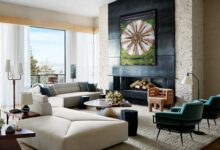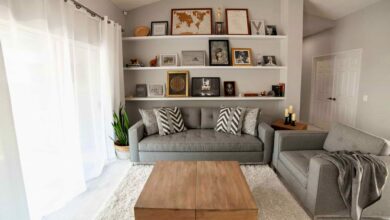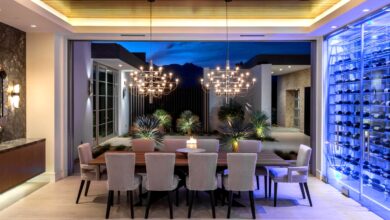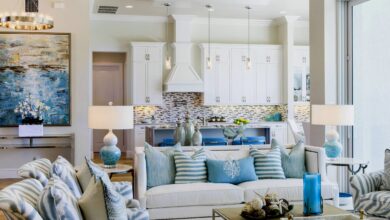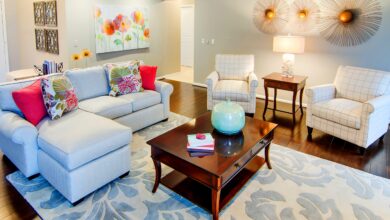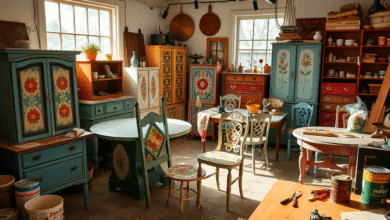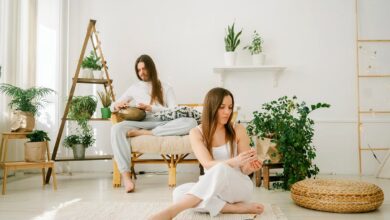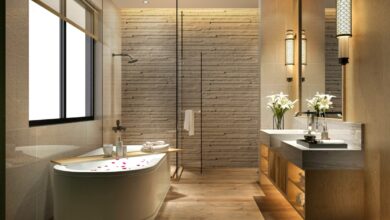The Psychology of Color in Home Decor (2025 Guide)

Color has an undeniable influence on our emotions, behaviors, and perceptions. As interior design trends evolve, the strategic use of color in home décor has become more vital than ever. In this 2025 guide, we delve deep into the psychology of color in home décor, offering insights into how different hues affect mood, how to choose color schemes for various rooms, and how to stay ahead of current design trends. Whether you’re renovating a single room or planning a full home makeover, understanding color psychology can elevate your living space into a harmonious sanctuary.
Understanding the Basics of Color Psychology
Color psychology explores how colors affect human mood and behavior. It has applications in marketing, branding, therapy, and of course, interior design. In the realm of home décor, the right colors can promote relaxation, stimulate conversation, inspire creativity, or provide comfort.
Every color evokes a specific emotional response:
- Red: Passion, energy, warmth
- Blue: Calmness, trust, serenity
- Yellow: Happiness, optimism, creativity
- Green: Balance, freshness, tranquility
- Purple: Luxury, spirituality, mystery
- Orange: Vitality, enthusiasm, friendliness
- White: Purity, cleanliness, simplicity
- Black: Sophistication, elegance, depth
- Gray: Neutrality, balance, calm
By incorporating these principles of color in home décor, homeowners can create intentional and impactful living environments.
Why Color in Home Décor Matters
Home is where we spend a significant portion of our lives. It’s a space of rest, family, productivity, and inspiration. The colors we surround ourselves with can subconsciously influence our daily experiences. That’s why the psychology of color in home décor isn’t just a trend—it’s a powerful tool.
For example, choosing blue for a bedroom can help improve sleep quality due to its calming properties. Using green in a home office can boost concentration and reduce eye strain. These are not arbitrary design choices; they are supported by decades of psychological research.
Color in Home Décor: Room-by-Room Analysis
Living Room
The living room is the heart of social interaction. Warm tones like terracotta, mustard, or muted orange can create a welcoming atmosphere. If you prefer a more relaxed vibe, shades of blue and green are perfect choices. Neutral tones such as beige or light gray serve as versatile backdrops that accommodate seasonal changes in accessories.
Bedroom
A place of rest and intimacy, the bedroom benefits from soothing colors. Soft blues, gentle lavenders, or muted earth tones promote relaxation. For a more romantic ambiance, consider blush pink or deep burgundy.
Kitchen
The kitchen is often a hub of activity. Bright, stimulating colors like yellow or coral can increase energy and even appetite. White and stainless-steel finishes offer a clean, modern aesthetic, but pairing them with colorful accents adds warmth.
Bathroom
Spa-like bathrooms benefit from cool tones such as teal, seafoam green, or light gray. These shades encourage a sense of cleanliness and calm. Accent tiles or accessories in bold hues like navy or emerald can add sophistication.
Home Office
Productivity and creativity are paramount in a home office. Blue and green tones improve focus, while yellow sparks innovation. Avoid overly saturated colors that may cause visual fatigue.
Current Trends in Color in Home Décor (2025 Edition)
As we navigate 2025, several color trends are dominating the interior design landscape:
- Earthy Neutrals: Beige, taupe, and clay tones bring a sense of groundedness and simplicity.
- Biophilic Greens: Reflecting our increasing connection to nature, shades of green—from sage to forest—are everywhere.
- Digital Lavender: A futuristic blend of lilac and gray, ideal for calming yet modern spaces.
- Sunset Shades: Warm reds, corals, and terracottas evoke warmth and nostalgia.
- Moody Blues: Deep, inky blues are perfect for adding drama and elegance.
Tips for Using Color Strategically in Home Décor
- Use the 60-30-10 Rule: 60% of the room should be a dominant color, 30% a secondary color, and 10% an accent.
- Test with Samples: Always test paint samples under different lighting conditions before committing.
- Consider Natural Light: Rooms with ample sunlight can handle darker tones; dim spaces may need lighter hues.
- Incorporate Texture and Pattern: Color isn’t limited to walls. Use throw pillows, rugs, and curtains to introduce new shades.
- Update Seasonally: Rotate accessories with the seasons for a dynamic yet cohesive look.
Psychological Effects of Specific Color Combinations
Understanding how different colors interact can enhance the psychological impact of your design. Here are a few powerful combinations:
- Blue and White: Evokes peace and clarity, perfect for bathrooms or coastal-themed rooms.
- Green and Brown: Feels natural and grounded, great for eco-inspired living spaces.
- Yellow and Gray: Balances optimism with sophistication, ideal for kitchens or playrooms.
- Red and Black: Bold and luxurious, suitable for accent walls or modern dining rooms.
- Lavender and Cream: Soft and calming, ideal for nurseries or bedrooms.
Cultural Considerations in Color in Home Décor
Color meanings vary across cultures. For instance, white symbolizes purity in Western cultures but mourning in some Eastern traditions. Red is considered lucky in China but can signify danger in other contexts. When designing a multicultural home or hosting diverse guests, cultural sensitivity in color choice is essential.
Sustainable and Eco-Friendly Color Choices
Sustainability is a growing concern in 2025. Opt for eco-friendly paints with low or no VOCs (Volatile Organic Compounds). Brands are increasingly offering sustainable options without compromising on vibrancy or quality.
The Future of Color in Home Décor
Advancements in technology and changing lifestyles are influencing how we use color. Smart lighting systems allow homeowners to change wall colors with LEDs. Augmented reality apps enable real-time previews of paint choices. Personalized color palettes driven by AI will become more prevalent, tailoring design to individual psychological profiles.
Conclusion
The strategic use of color in home décor is more than an aesthetic decision—it’s a psychological one. With the right knowledge, you can transform your home into a place that not only looks stunning but also feels just right. By understanding how different hues affect mood, leveraging emerging design trends, and applying thoughtful color combinations, you can create a home that enhances your lifestyle and well-being.
As you embark on your interior design journey in 2025, let the psychology of color in home décor guide your choices. Whether you’re painting a wall, choosing a couch, or adding a rug, every hue has a story to tell and an emotion to evoke. Make your home a reflection of your personality, mood, and aspirations—one color at a time.
